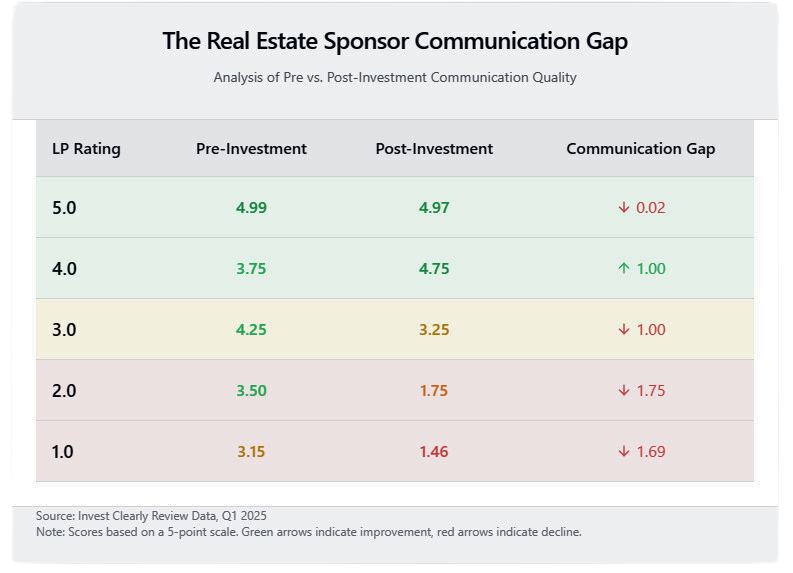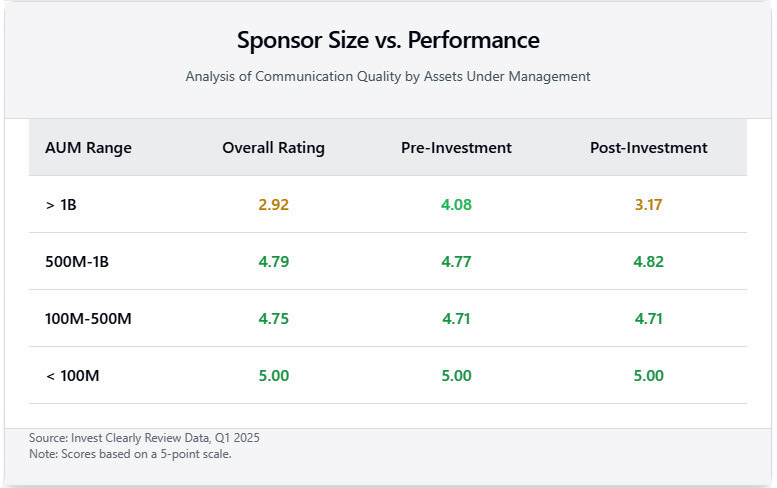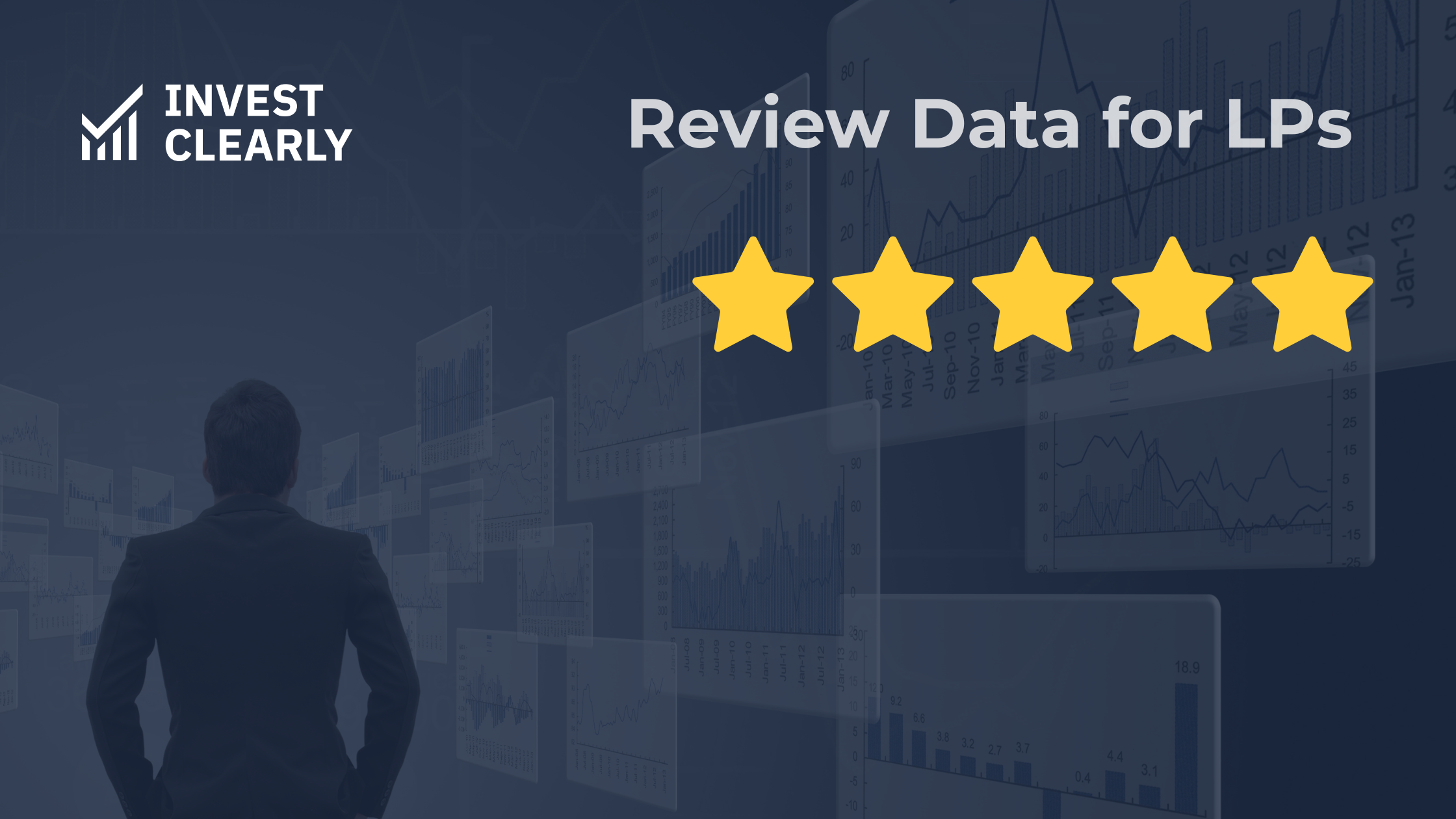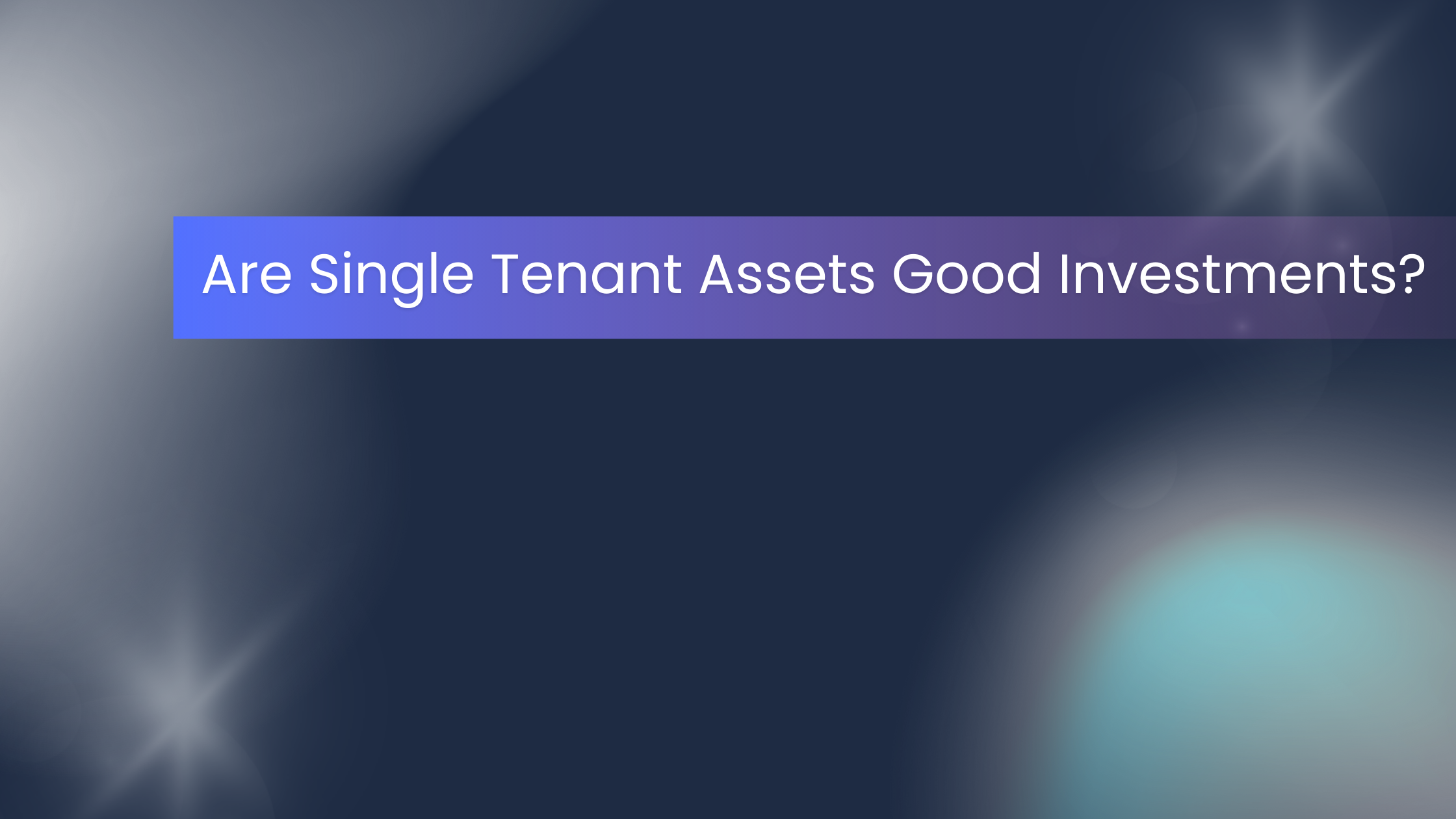
Investor Experience Index: The Pre/Post Investment Communication Gap (Q1 2025)
Never miss an Invest Clearly Insights article
Subscribe to our newsletter today
In an analysis of limited partner reviews, a concerning pattern emerges in real estate sponsor-investor relationships: the notable disparity between pre and post-investment communication quality.
While most sponsors excel during the fundraising phase, averaging pre-investment communication scores above 3.0 even in otherwise poorly-rated investments, these scores drop dramatically after capital is committed. This "communication cliff" is most pronounced in poorly-rated investments, where post-investment communication scores plummet by up to 1.75 points on a 5-point scale.

The data reveals three distinct tiers of sponsor performance:
Elite Performers:
- Maintain consistent communication quality throughout the investment lifecycle
- Show minimal drop-off between pre and post-investment metrics
- Average 4.99 pre-investment and 4.97 post-investment scores
Middle Tier:
- Experience moderate communication decline post-investment
- Maintain acceptable but reduced engagement levels
- Show varied performance across metrics
Underperformers:
- Display the sharpest decline in communication quality
- Pre-investment scores average 3.15, dropping to 1.46 post-investment
- Often accompany misaligned expectations and leadership concerns
The Size Paradox
Further analysis reveals a counterintuitive relationship between sponsor size and investor satisfaction. Despite having greater resources for investor relations, the largest sponsors (>$1B AUM) show notably lower satisfaction rates, averaging 2.92 overall compared to 4.79 for mid-sized sponsors ($500M-1B).

This "size paradox" appears most pronounced in post-investment communication:
- $500M-1B sponsors: 4.77 pre-investment rises to 4.82 post-investment
- <$100M sponsors: Maintain consistent 5.00 ratings across both phases
- $1B AUM sponsors: 4.08 pre-investment drops to 3.17 post-investment
Mid-sized sponsors appear to hit a sweet spot, combining institutional-quality resources with maintained personal attention. This suggests that communication challenges may be more about scalability than resources, with larger organizations potentially struggling to maintain the personal touch that characterizes successful investor relations.
For LPs, this analysis underscores the importance of investigating a sponsor's long-term investor relations track record. High-touch fundraising communication, while common, may not translate to sustained engagement throughout the investment period. The data particularly suggests that size and resources alone don't guarantee better investor communication - and may actually predict the opposite.
Written by
Invest Clearly empowers you to make informed decisions by hosting unbiased reviews of passive investment sponsors from verified experienced investors.
Other Articles

Is Private Equity Coming to Your 401(k)?
A new executive order could lead to private markets getting access to 401(k) capital. Learn how a new wave of capital and liquidity demands could affect private real estate.

Investor Experience Index Q3, 2025: LP Takeaways
Discover quarterly insights of how LPs rate their experiences with GPs. Get data-driven questions to use when evaluating GPs.

An Honest Assessment of Feeder Funds
Feeder funds get a bad reputation. The middleman can create drag, opacity, and misaligned incentives. But when done correctly, they’re useful for access and diligence. The problem is, almost nobody uses them correctly in retail real estate investing.

Investor Experience Index Q3 2025: GP Takeaways
The Investor Experience Index provides a quarterly snapshot of how limited partners (LPs) rate their experiences with general partners (GPs). The data for this report is drawn exclusively from verified investor reviews published on Invest Clearly in Q3 2025.

From Interest to Action: A Step-by-Step Guide for First-Time Syndication Investors
Four steps to help new investors invest in syndications confidently and move past decision paralysis.

Single-Tenant Net Leases: A Simple Way to Build Predictable Income
Discover why single-tenant net lease properties offer investors steady income, lower risk, and passive management.